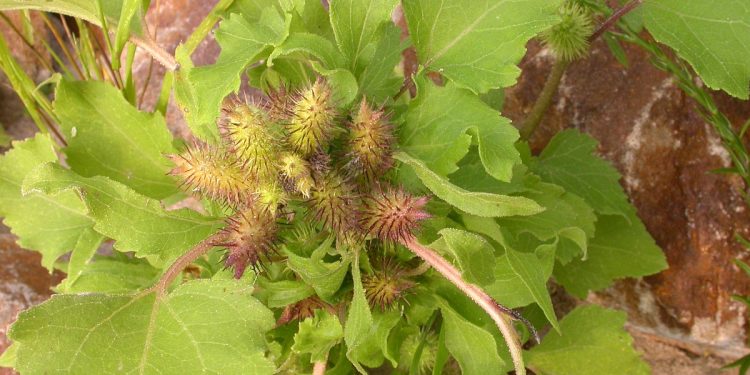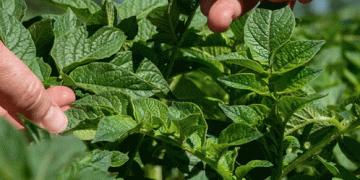#XanthiumStrumarium #InvasiveWeed #Agriculture #PublicHealth #IntegratedWeedManagement #Herbicides #CropProduction #LivestockHealth
Xanthium strumarium, commonly known as cocklebur, is a noxious weed that originated from North America but has since spread to other parts of the world, including Asia, Africa, and Europe. This weed thrives in agricultural fields and can cause significant damage to crops and livestock. Furthermore, its seeds and leaves are toxic to humans and animals, making it a serious health hazard.
Development of Xanthium strumarium
Xanthium strumarium is an annual weed that reproduces through its seeds. The plant can grow up to 1.5 meters in height, and its stems are covered with spiky burrs that cling to animals’ fur and clothing, aiding in the dispersion of the seeds. The weed prefers sunny, moist habitats and can quickly colonize disturbed areas such as fields, roadsides, and riverbanks.
Consequences of Development
The presence of Xanthium strumarium in agricultural fields poses a significant threat to crop production. The weed is known to compete aggressively with crops for nutrients and water, leading to reduced yields. In addition, the weed’s spiky burrs can become entangled in livestock’s hair, causing skin irritation and infections.
Furthermore, Xanthium strumarium is a health hazard to humans and animals alike. The weed’s leaves and seeds contain toxins that can cause digestive problems, respiratory distress, and allergic reactions. The seeds’ burrs can also become lodged in the respiratory tract, leading to severe respiratory distress.
Control measures
To control the spread of Xanthium strumarium, farmers and land managers should adopt integrated weed management strategies. These strategies involve a combination of cultural, mechanical, biological, and chemical control methods. Cultural control methods such as crop rotation and timely planting can help reduce the weed’s infestation. Mechanical control methods such as hand pulling and hoeing can also be effective in small infestations.
Biological control methods involve the introduction of natural enemies such as insects and pathogens to control the weed’s spread. Chemical control methods such as herbicides are also effective, but their use should be carefully regulated to avoid environmental contamination and the development of herbicide-resistant weeds.
Conclusion
Xanthium strumarium is an invasive weed that poses a significant threat to agriculture and public health. Farmers and land managers should take proactive measures to control the spread of this weed to prevent its adverse effects on crop production and livestock health. By adopting integrated weed management strategies, we can effectively manage Xanthium strumarium and mitigate its negative impacts.






